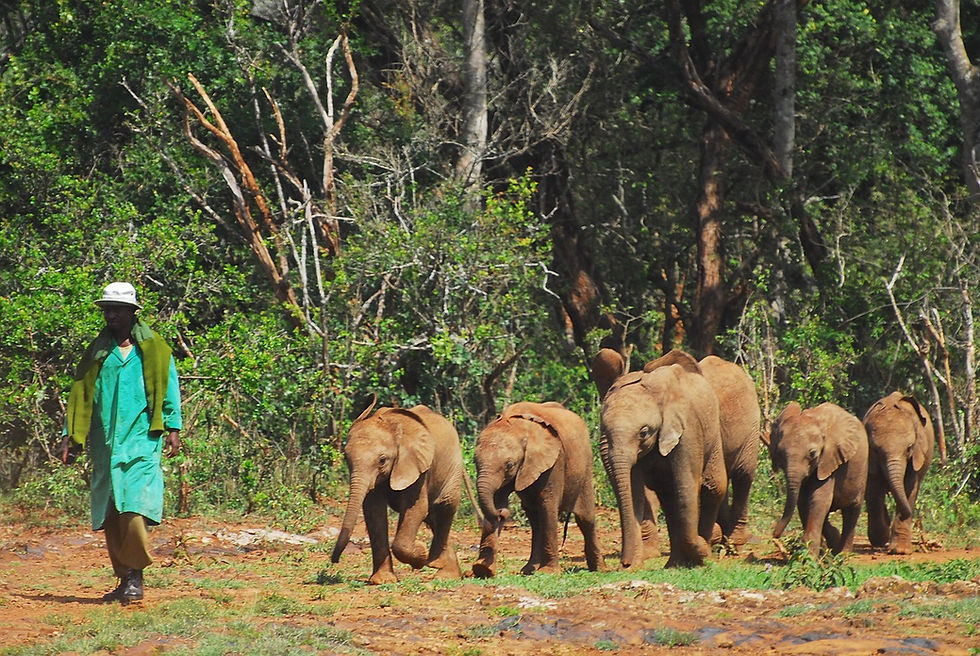The Origins & History of Wildlife Conservation
- Carina Kramer

- Mar 16, 2024
- 3 min read
Updated: Mar 17, 2024
Have you ever stopped to think about how wildlife conservation first began? The history of wildlife conservation is a fascinating journey that has evolved over centuries. In this article, we will delve into the origins of wildlife conservation, exploring the early beginnings and the key milestones that have shaped the way we protect and preserve our natural world.
The Early Beginnings
The concept of wildlife conservation can be traced back to ancient civilizations, where people lived in harmony with nature and recognized the importance of preserving wildlife for future generations. In ancient China, for example, there were strict hunting regulations in place to prevent the overexploitation of certain species. Similarly, Native American tribes in North America had traditions of conservation that ensured the sustainable use of resources.
The Rise of Modern Conservation Movements
The modern conservation movement as we know it today began to take shape in the 19th century, as industrialization and urbanization led to the destruction of natural habitats and the depletion of wildlife populations. One of the earliest conservationists was John Muir, who founded the Sierra Club in 1892 to protect the wilderness areas of the United States. His advocacy efforts laid the foundation for the national park system and the conservation movement as a whole.
Key Milestones in Wildlife Conservation
Throughout history, there have been several key milestones that have influenced the course of wildlife conservation. In 1887, the first national park, Yellowstone, was established in the United States, setting a precedent for the preservation of wilderness areas. The creation of the International Union for Conservation of Nature (IUCN) in 1948 marked a turning point in global conservation efforts, bringing together countries and organizations to work towards the protection of biodiversity.
Here are some more significant dates:
1973: The Endangered Species Act (ESA) was signed into law in the United States, providing protections for threatened and endangered species and their habitats.
1975: The Convention on International Trade in Endangered Species of Wild Fauna and Flora (CITES) came into effect, regulating international trade in endangered species and their parts.
1992: The United Nations Conference on Environment and Development, also known as the Earth Summit, was held in Rio de Janeiro, Brazil, leading to the adoption of the Convention on Biological Diversity (CBD) to promote conservation and sustainable use of biodiversity.
2002: The African Elephant Summit was held in Kenya, resulting in the development of the African Elephant Action Plan to address threats to elephant populations across Africa.
2006: The Global Tiger Initiative was launched by the World Bank and conservation organizations to double the number of wild tigers by 2022, the next Year of the Tiger in the Chinese zodiac.
2013: The London Conference on Illegal Wildlife Trade was hosted to address the escalating crisis of wildlife trafficking and strengthen international cooperation to combat illegal wildlife trade.
2015: The United Nations Sustainable Development Goals (SDGs), including Goal 15: Life on Land, were adopted to promote the conservation and sustainable use of terrestrial and marine ecosystems.
2016: The CITES CoP17 conference was held in South Africa, where decisions were made to strengthen regulations on the trade of endangered species such as pangolins and sharks.
2018: The Global Climate Action Summit took place in California, highlighting the urgent need to address climate change to protect wildlife and ecosystems worldwide.
2019: The United Nations General Assembly declared 2021-2030 the United Nations Decade on Ecosystem Restoration to support global efforts to restore degraded ecosystems and conserve biodiversity.

The Role of Conservation Organizations
Today, there are numerous conservation organizations dedicated to protecting wildlife and habitats around the world. From the World Wildlife Fund (WWF) to the Wildlife Conservation Society (WCS), these organizations play a crucial role in raising awareness, conducting research, and implementing conservation projects. Their work is essential in preserving endangered species and ecosystems for future generations.
Challenges and Opportunities
While significant progress has been made in wildlife conservation, there are still many challenges that need to be addressed. Habitat destruction, poaching, climate change, and pollution continue to threaten wildlife populations globally. However, with advances in technology and increased public awareness, there are also opportunities to make a positive impact on conservation efforts.
In conclusion, the origins of wildlife conservation can be traced back to ancient civilizations and have evolved over time to become a global movement dedicated to protecting our natural world. By understanding the history of conservation and the key milestones that have shaped it, we can work towards a sustainable future for wildlife and future generations.
What are your thoughts on conservation?
Are you maybe working as a conservationist, have volunteered or are donating occasionally?
Let me know in the comments below.







Comments